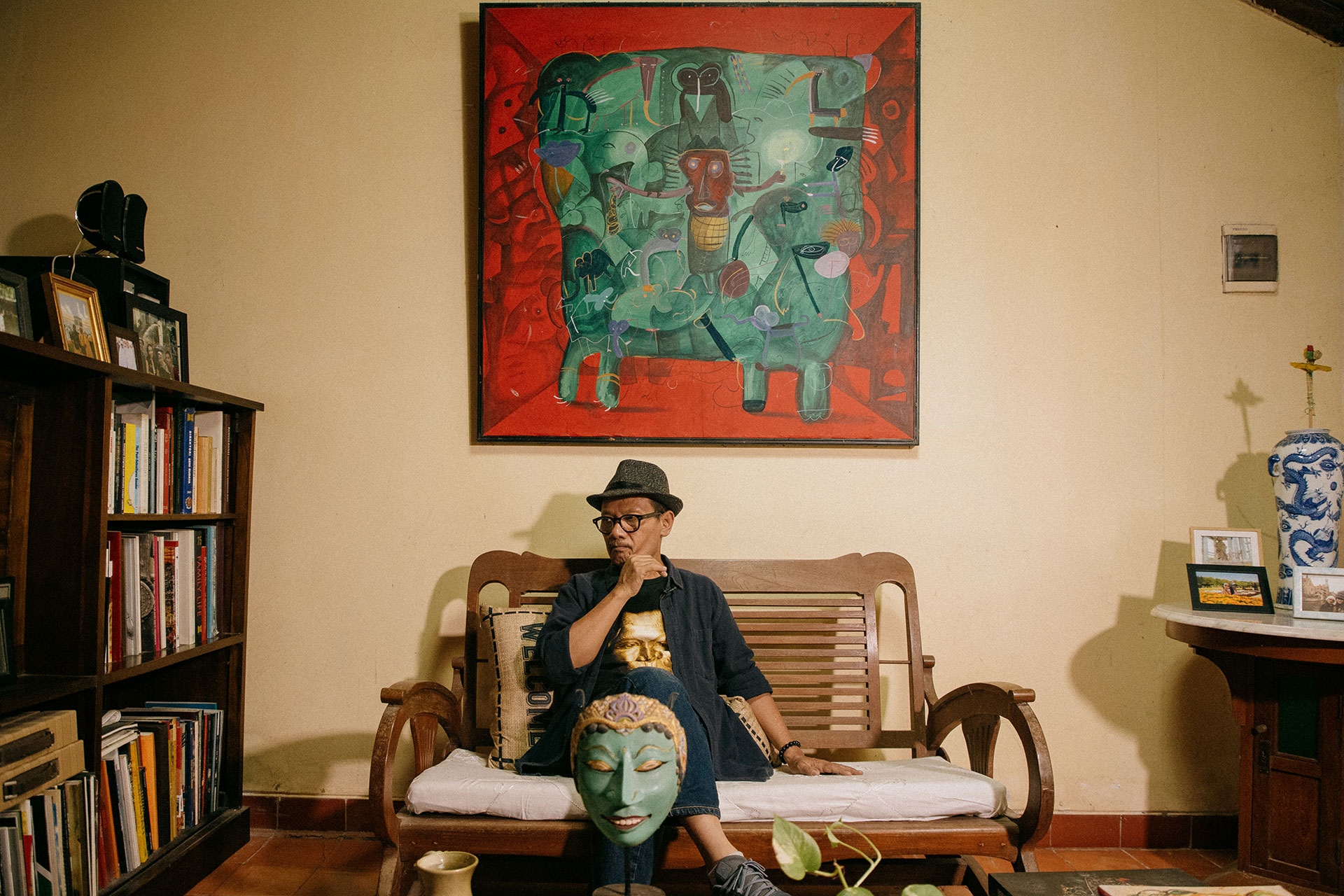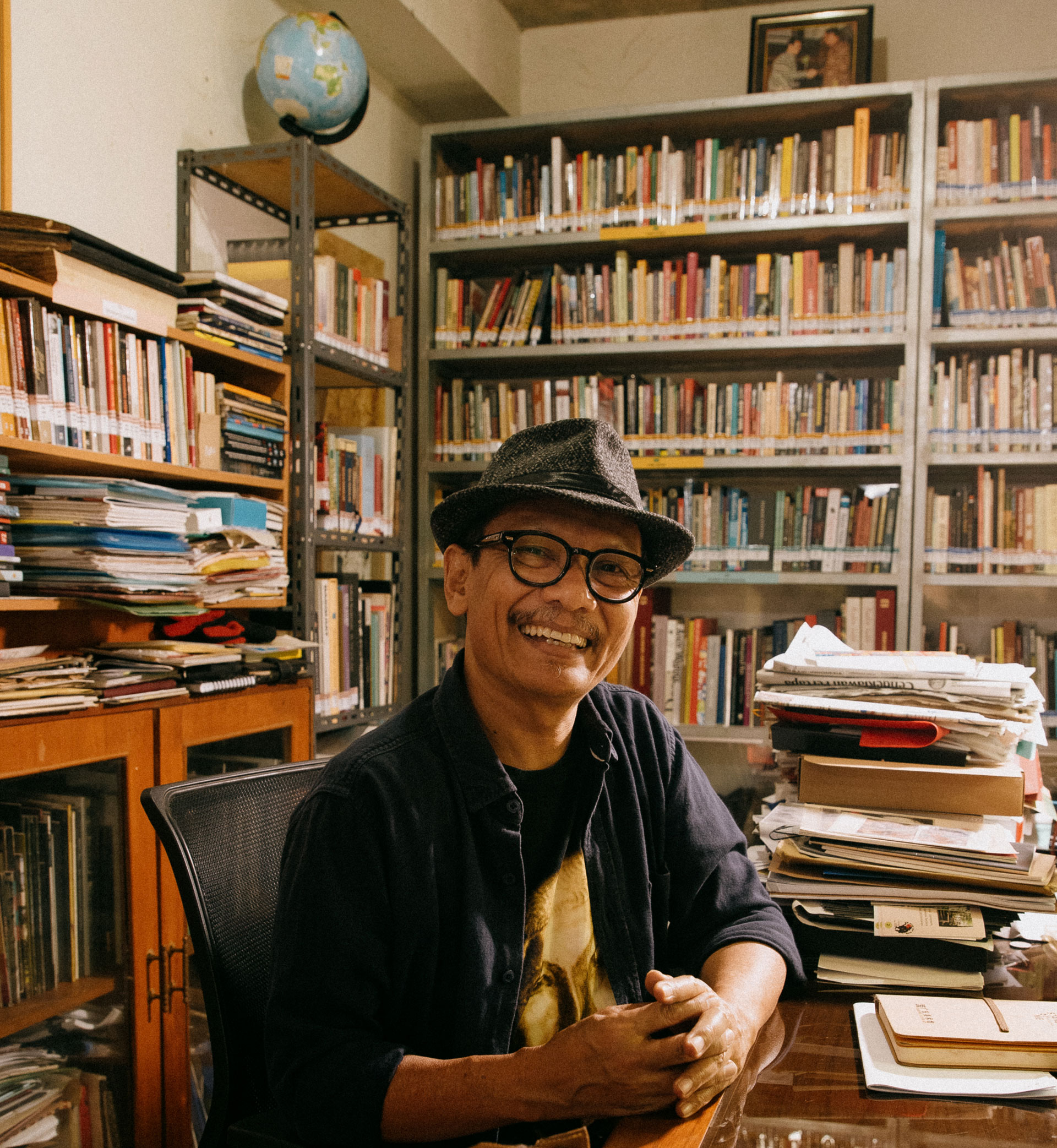Free Shiping All Around Indonesia
Free Shiping All Around Indonesia

What do you think are the most important aspects a curator needs to have when creating a discourse or exhibition?
SUWARNO: First, a curator has to have relevant disciplines with their subject of interest. I’m interested in curating visual art, and my degrees are in line with it. Second, a curator, of course, has to keep up with the current issue. It doesn’t have to be the entire issue, but you should at least grasp the general idea, because I, too, know that it’s impossible to keep up with everything. This is why young curators are needed to accommodate newer ideas. Third, of course, have the passion, a genuine love, for the art. I’m constantly thinking about art. Following, listening, and reading about art; meeting and hanging out with fellow artists. There is no other choice. You have to be fully committed. That’s the main rule. Therefore, a curator has their own preference, reference, and possesses an intellectual inclination to find suitable themes to frame an art phenomenon.
Tell us a bit about the most memorable exhibition for you.
SUWARNO: Of course, there are plenty of memorable exhibitions; I have been in this profession for almost 30 years. But to mention a few, I would say the experience of being the curator for the Jogja Biennale, where I have participated 4 or 5 times. Why memorable? Because the challenges were immense, the polemics were huge, and the tension was high. It’s always a rush of adrenaline for me. The conversations were harsh, but that’s what the art world is about. I enjoyed it because that’s how I thought art was supposed to be: full of tension, dialogues, and dialectics. It doesn’t then undo the friendships either. You are free to debate with each other, with no hard feelings. We’re all friends, sure, but if it’s about principles or concepts, the floor is always open to challenge each other.
Then, of course, curating for the National Gallery, there are many memorable programs. For instance, POROS (2021), a virtual exhibition on monuments and artworks in the public sphere; LINI TRANSISI (2019), highlighted artworks with historical backgrounds. There was also Manusia dan Kemanusiaan (2019) at the OHD Museum, which was initiated together with Gus Mus (K.H. Ahmad Mustofa Bisri), it was full of warm discussion on the discomfort about the nation and humanity.
You mentioned a virtual exhibition. How did the pandemic affect curatorial processes?
SUWARNO: Pandemic is an extraordinary phenomenon because it turns everything around. The call for entering the global scale and breaking through boundaries has to take a step backward towards the local. The desire for socializing has turned into distancing. The habit we’ve probably neglected, particularly hygiene, has changed for the better. In that light, the experience of understanding and enjoying art has also changed. What was originally a direct interaction, meaning that you could watch, listen to, and feel the artworks, all of that became virtual. Back then, everyone was confused: the artists, the curators, and the galleries were all baffled. However, I think the confusion only lasted for a while. In the second half of the pandemic, people started adapting to virtual exhibitions. Art always finds a way to interact with its community. In virtual exhibitions, we’re adjusting how everyone can interact intimately with technology. This means some things need thorough consideration, one of them being how we can understand the practice, shape, and phenomenon of the art itself. Those were the challenges.
Is there any positive experience gained from conducting virtual exhibitions?
SUWARNO: Yes, plenty actually. A virtual exhibition can reach people everywhere, even those in different time zones. You can enjoy art pieces whenever you like, from any part of the world. What we did at the National Gallery was similar. The format became more interactive, you can see the details better because of the zooming feature and other camera technology. For example, the POROS exhibition that I curated for the National Gallery. I have never seen the entirety of the position, shape, texture, and expression of the Monumen Selamat Datang, Monumen Dirgantara, and Monumen Pembebasan Irian Barat from such an up-close view.
The pandemic, I would say, is the time for us to come back to details, to the pursuit of knowledge. What was it like pre-pandemic? Art is full of celebration. Coming to an exhibition was becoming less for the works and more for the meeting and celebrating with colleagues. Throughout the pandemic, however, all of that disappeared. Throughout the pandemic, people came back to art. The discussion of it, the understanding of it. A period of hibernation.

What does being a curator mean in today’s era?
SUWARNO: It’s an excellent question and not easy to answer. Being a curator in this era, I believe that the main focus is to produce knowledge. The challenge for today’s curators is how they can produce knowledge from a critical point of view by interpreting artworks as a part of knowledge. Second, of course, how presenting art remains important through various means. Curators must collaborate with many parties, get intimate with technology, and broaden their network. I also imagine that it’s necessary for more and more specific curators to emerge. There will be ones focusing on collective art, modern art, fashion, jewelry, anything. Why so? Because that way, knowledge can be explored continuously. Being a generalist remains essential, but the emergence of specialists becomes equally necessary for deeper exploration of knowledge.
Writer Kresentia Madina
Creative Director Amino Birahmatillah
Art Director Ariq Rahadian
Photographer 038 Lab Huis
Videographer Rahmat Mukhlasin
Assistant Antino Restu